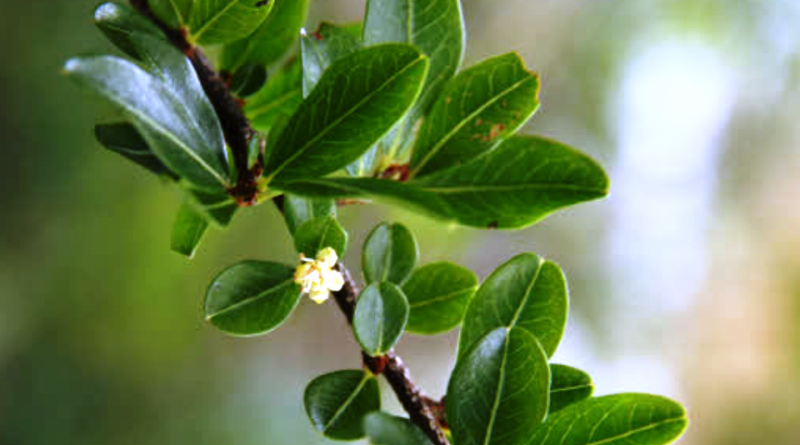Erythroxylum vaccinifolium
Erythroxylum vaccinifolium
Erythroxylum vaccinifolium, also called catuaba, (Erythroxylum vaccinifolium Martius 1840) is a shrub species belonging to the Malpighiaceae family.
Systematics –
From a systematic point of view it belongs to:
Eukaryota Domain,
Kingdom Plantae,
Magnoliophyta Division,
Rosidi class,
Order Malpighiales,
Family Malpighiaceae,
Genus Erythroxylum,
E. vaccinifolium species.
The term is synonymous:
– Erythroxylum catuaba AJSilva ex Raym.-Hamet, 1936.
Etymology –
The term Erythroxylum is the union of the Greek words erythr-, erythros, red and ξύλον xýlon wood.
The specific epithet vaccinifolium refers to Vaccinium, which comes from baccínium, connected with the diminutive of bácca berry: which produces small berries and from folium leaf: with leaves similar to those of plants of that genus.
Geographic Distribution and Habitat –
Erythroxylum vaccinifolium is a plant native to the central and north-western tropical regions of South America and distributed in an area that includes north-eastern Brazil, south-eastern Brazil, and central-western Brazil.
Description –
Erythroxylum vaccinifolium is a very branched shrub, covered with a reddish rind. It has alternate leaves of an intense, oval, whole and isolated green. It has small pentameric flowers, white-yellowish actinomorphic, isolated or grouped at the leaf axil, with 10 concrescendo stamens at the base and 3 carpels which constitute a trilocular ovary which, when ripeness presents only one loggia. The fruit is a small reddish drupa containing only one seed.
Cultivation –
Erythroxylum vaccinifolium is a plant that grows in nature in areas of the Amazon rainforest and collected for medicinal uses.
Customs and Traditions –
Erythroxylum vaccinifolium is a Brazilian endemic plant used in traditional medicine and locally known as catuaba, which has been used since ancient times, like other plants, to prepare an infusion used as an aphrodisiac in the phytotherapy of this country.
It contains a class of tropane alkaloids called catuabins.
Scientific research on this plant has revealed nine new tropane alkaloids that have been isolated from the bark.
All compounds were identified as tropanediol or -trol alkaloids esterified by at least one 1-methyl-1H-pyrrole-2-carboxylic acid. One of the isolated compounds was identified as a tropane N-oxide alkaloid. Their structures were determined by high-resolution mass spectrometry and multidimensional NMR spectroscopy.
Method of Preparation –
Both the bark and the leaves of this plant are used for various uses, especially of the medicinal type.
Guido Bissanti
Sources
– Acta Plantarum – Flora of the Italian Regions.
– Wikipedia, the free encyclopedia.
– Useful Tropical Plants Database.
– Conti F., Abbate G., Alessandrini A., Blasi C. (ed.), 2005. An annotated checklist of the Italian vascular flora, Palombi Editore.
– Pignatti S., 1982. Flora d’Italia, Edagricole, Bologna.
– Treben M., 2000. La Salute from Farmacia del Lord, Advice and experiences with medicinal herbs, Ennsthaler Editore.
Caution: Pharmaceutical applications and alimurgical uses are indicated for informational purposes only, they do not represent in any way a medical prescription; therefore no responsibility is taken for their use for curative, aesthetic or food purposes.


